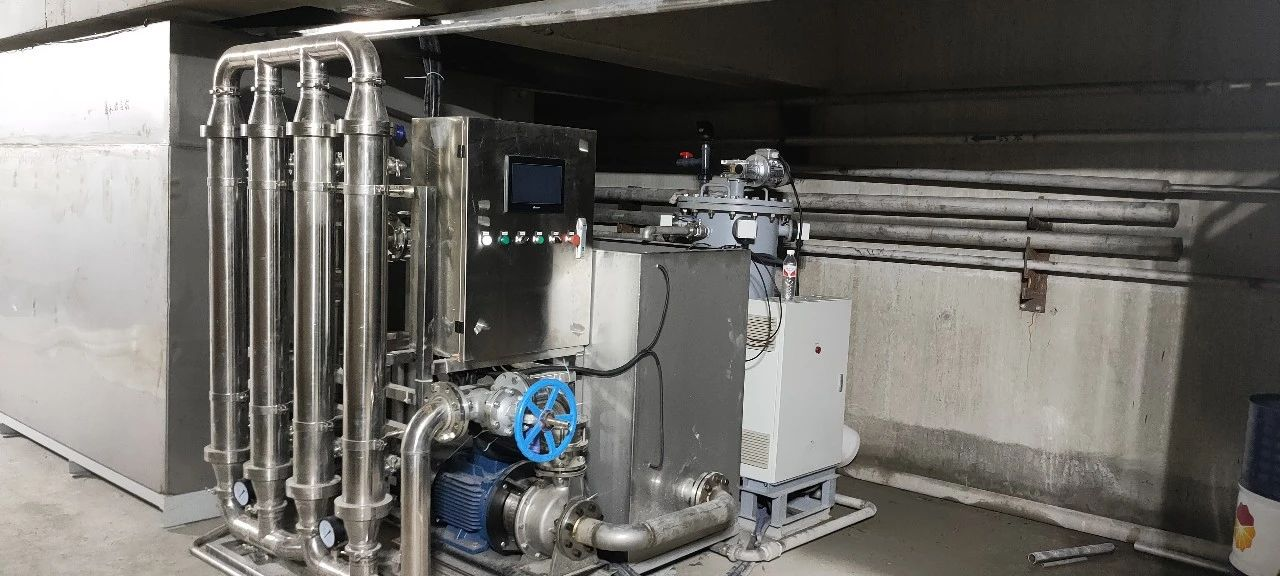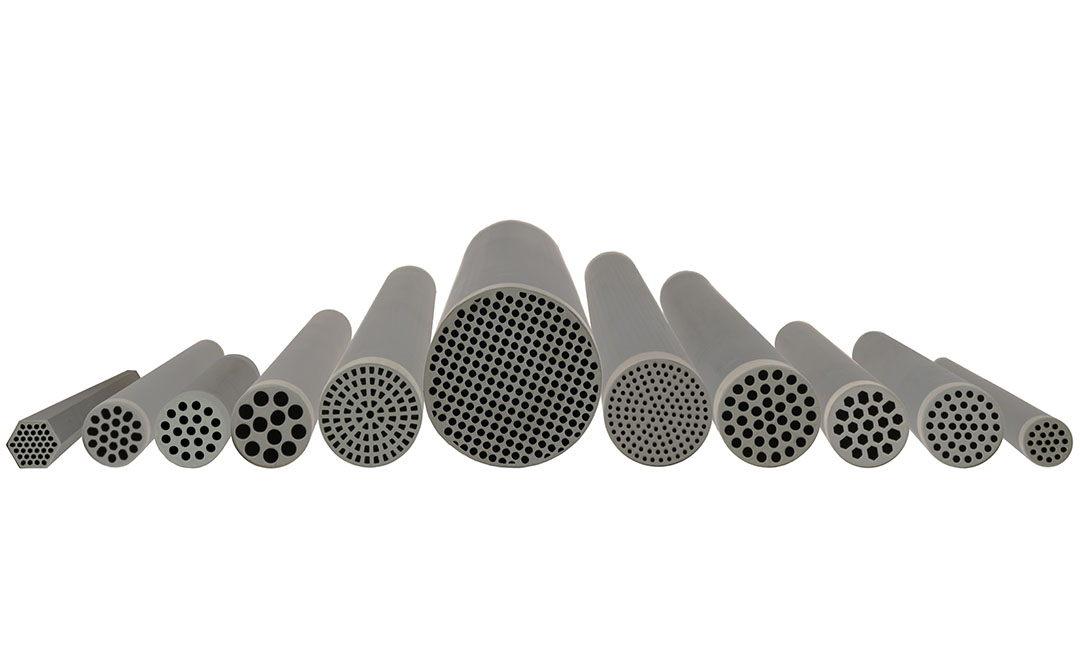Benefits of SiC Membrane Separation Technology in Water Treatment
Silicon carbide (SiC) membrane separation technology has emerged as a promising solution for water treatment applications due to its unique properties and benefits. SiC membranes offer superior performance compared to traditional polymeric membranes, making them ideal for various water treatment processes. In this article, we will explore the innovative applications of SiC membrane separation technology in water treatment and the benefits it brings to the industry.

One of the key advantages of SiC membrane separation technology is its high chemical and thermal stability. SiC membranes can withstand harsh chemical environments and high temperatures, making them suitable for treating challenging wastewater streams. This durability ensures long-term performance and reduces the need for frequent membrane replacements, resulting in cost savings for water treatment plants.

Additionally, SiC membranes have a high mechanical strength, allowing them to operate at high pressures without compromising their integrity. This feature enables SiC membranes to achieve higher water flux rates and better separation efficiency compared to polymeric membranes. As a result, water treatment plants can achieve higher throughput and improved water quality with SiC membrane technology.
Another benefit of SiC membrane separation technology is its resistance to fouling. Fouling is a common issue in membrane filtration processes, where contaminants accumulate on the membrane surface and reduce its performance. SiC membranes have a smooth surface and a negative charge, which repels foulants and prevents them from adhering to the membrane. This anti-fouling property extends the lifespan of SiC membranes and ensures consistent performance over time.
Furthermore, SiC membranes offer excellent selectivity and rejection of contaminants, making them effective in removing a wide range of pollutants from water. Whether it is organic compounds, heavy metals, or microorganisms, SiC membranes can effectively separate these contaminants from water, producing clean and safe drinking water. This versatility makes SiC membrane technology suitable for various water treatment applications, including desalination, wastewater reclamation, and industrial process water treatment.
Innovative applications of SiC membrane separation technology in water treatment include the treatment of challenging wastewater streams, such as produced water from oil and gas operations. SiC membranes can effectively remove oil, grease, and other contaminants from produced water, allowing for safe discharge or reuse of the treated water. This application helps industries comply with environmental regulations and reduce their environmental footprint.
Additionally, SiC membrane technology is being used in the treatment of brackish water and seawater for desalination purposes. SiC membranes can achieve high salt rejection rates and produce high-quality drinking water from saline sources. This application is particularly important in regions facing water scarcity issues, where desalination can provide a sustainable source of freshwater for communities.
Overall, SiC membrane separation technology offers numerous benefits for water treatment applications, including high chemical and thermal stability, mechanical strength, anti-fouling properties, selectivity, and rejection of contaminants. These advantages make SiC membranes a valuable tool for achieving efficient and sustainable water treatment processes. As the demand for clean water continues to grow, innovative technologies like SiC membrane separation will play a crucial role in meeting the water treatment needs of the future.
Case Studies of Successful Implementation of SiC Membrane Separation Technology
Silicon carbide (SiC) membrane separation technology has emerged as a promising solution for water treatment due to its high chemical and thermal stability, as well as its excellent mechanical strength. In recent years, there have been several successful case studies showcasing the innovative applications of SiC membrane separation technology in various water treatment processes.
One such case study comes from the city of Singapore, where SiC membrane modules were installed in a water treatment plant to improve the efficiency of the desalination process. By using SiC membranes, the plant was able to achieve higher water recovery rates and reduce energy consumption compared to traditional polymeric membranes. This resulted in significant cost savings for the city and helped to ensure a stable and reliable water supply for its residents.
In another case study, a chemical manufacturing plant in the United States implemented SiC membrane technology to treat wastewater from its production processes. The SiC membranes were able to effectively remove contaminants such as heavy metals and organic compounds, allowing the plant to meet stringent environmental regulations and avoid costly fines. The plant also saw an increase in overall efficiency and productivity, as the treated water could be recycled and reused in various processes within the facility.
Furthermore, SiC membrane technology has been successfully applied in the treatment of industrial wastewater from the mining industry. A mining company in Australia utilized SiC membranes to treat wastewater containing high concentrations of heavy metals and other pollutants. The SiC membranes proved to be highly effective in removing these contaminants, allowing the company to safely discharge the treated water into the environment without causing harm to local ecosystems. This innovative solution not only helped the company comply with environmental regulations but also improved its reputation as a responsible and sustainable business.
Additionally, SiC membrane technology has been used in the treatment of brackish water in agricultural settings. A farm in Spain implemented SiC membranes to purify brackish water for irrigation purposes, allowing the farm to expand its crop production without depleting freshwater resources. The SiC membranes provided a cost-effective and sustainable solution for treating brackish water, enabling the farm to increase its crop yield and profitability while minimizing its environmental impact.
Overall, these case studies demonstrate the versatility and effectiveness of SiC membrane separation technology in various water treatment applications. From desalination and wastewater treatment to industrial and agricultural water purification, SiC membranes have proven to be a reliable and efficient solution for addressing water scarcity and pollution challenges. As technology continues to advance, it is likely that we will see even more innovative applications of SiC membrane technology in the future, further contributing to the sustainable management of water resources worldwide.
Future Trends and Developments in SiC Membrane Separation Technology for Water Treatment
Silicon carbide (SiC) membrane separation technology has been gaining traction in the field of water treatment due to its unique properties and advantages over traditional membrane materials. SiC membranes are known for their high chemical and thermal stability, as well as their excellent mechanical strength and durability. These properties make SiC membranes ideal for a wide range of water treatment applications, including desalination, wastewater treatment, and industrial process water purification.
One of the key advantages of SiC membrane technology is its ability to operate at high temperatures and in harsh chemical environments. This makes SiC membranes well-suited for treating challenging water sources, such as brackish water or wastewater with high levels of contaminants. In addition, SiC membranes have a high flux rate, allowing for faster and more efficient water treatment processes compared to traditional membrane materials.
In recent years, researchers and engineers have been exploring innovative applications of SiC membrane technology to further improve water treatment processes. One promising development is the use of SiC membranes for the removal of emerging contaminants, such as pharmaceuticals, personal care products, and microplastics, from water sources. These contaminants are not effectively removed by conventional water treatment methods and pose a growing concern for human health and the environment.
By leveraging the unique properties of SiC membranes, researchers have been able to develop advanced filtration systems that can effectively remove these emerging contaminants from water sources. For example, SiC membranes can be modified with functional groups or coatings that selectively adsorb or degrade specific contaminants, allowing for targeted removal of pollutants from water streams. This targeted approach not only improves the efficiency of water treatment processes but also reduces the environmental impact of contaminant removal.
Another innovative application of SiC membrane technology is the integration of membrane distillation for water desalination. Membrane distillation is a thermal-driven process that utilizes a hydrophobic membrane to separate water vapor from a saline solution. By combining SiC membranes with membrane distillation, researchers have been able to achieve higher water recovery rates and lower energy consumption compared to traditional desalination methods.
The use of SiC membranes in membrane distillation also offers advantages in terms of fouling resistance and long-term performance. SiC membranes are less prone to fouling and scaling compared to other membrane materials, making them ideal for continuous operation in desalination plants. Additionally, the high thermal conductivity of SiC membranes allows for efficient heat transfer during the distillation process, further improving the overall performance of the system.
Overall, the innovative applications of SiC membrane separation technology in water treatment hold great promise for addressing the growing challenges of water scarcity and pollution. By leveraging the unique properties of SiC membranes, researchers and engineers can develop advanced filtration systems that are more efficient, cost-effective, and environmentally friendly. As the demand for clean water continues to rise, SiC membrane technology is poised to play a key role in shaping the future of water treatment and sustainability.

